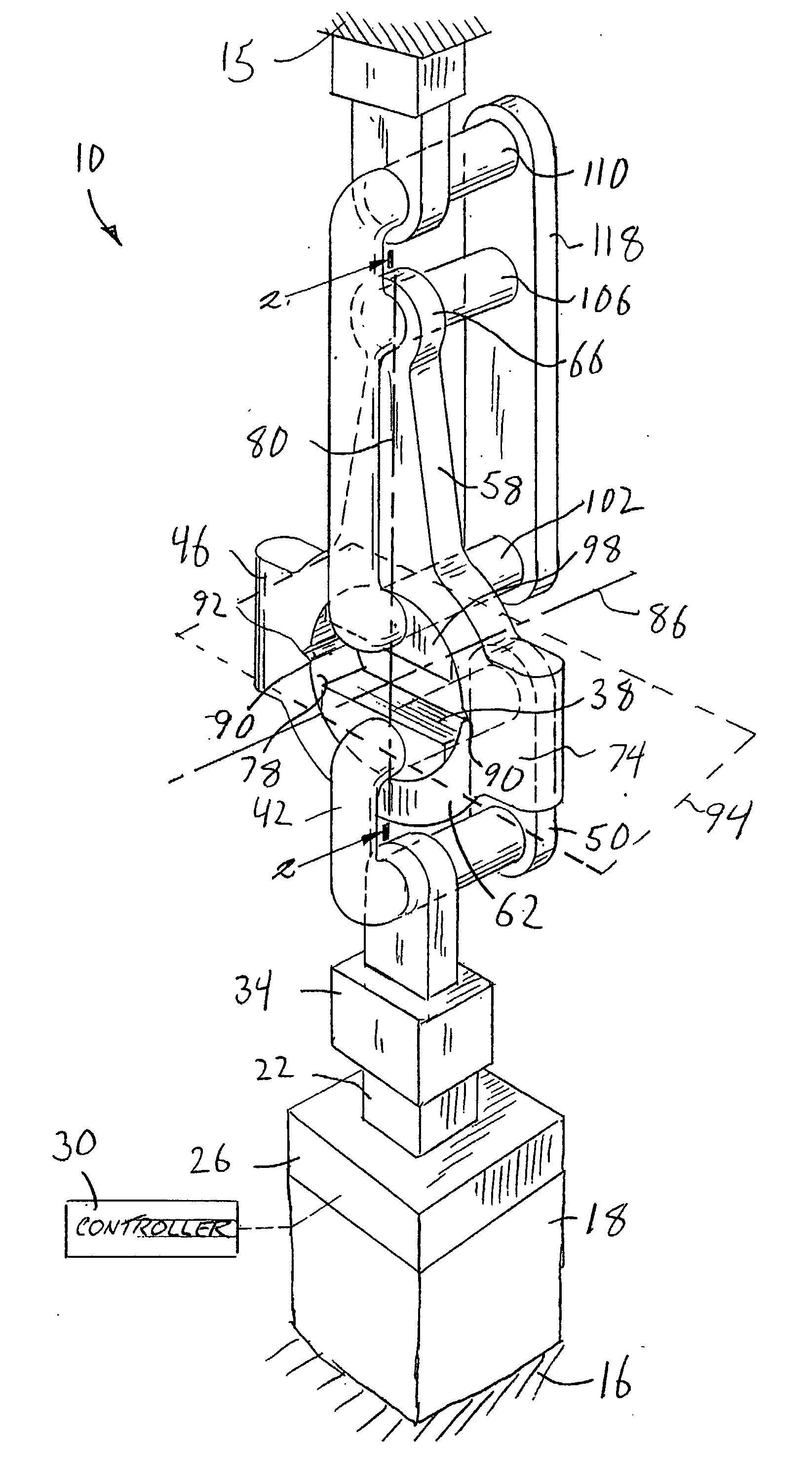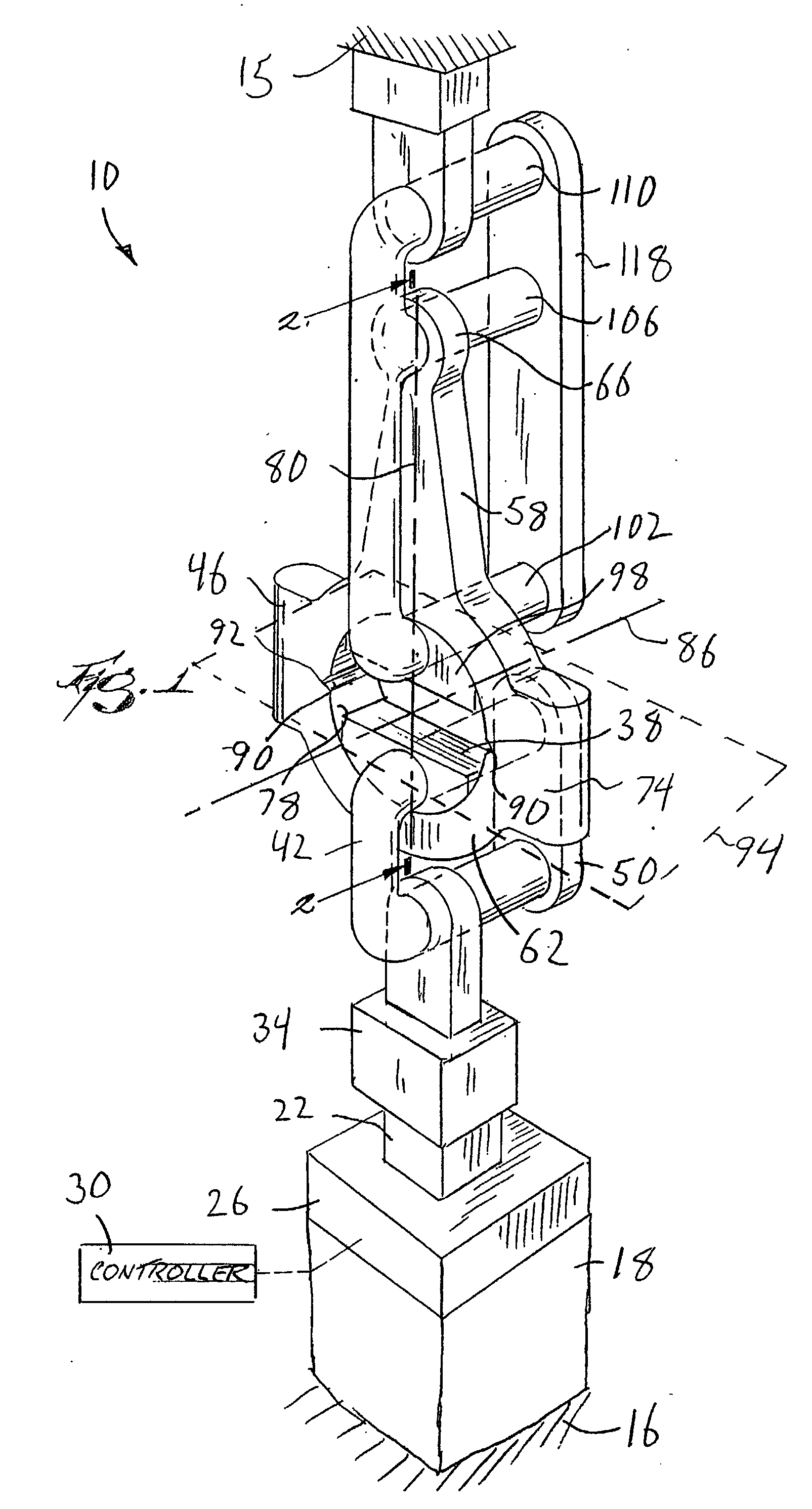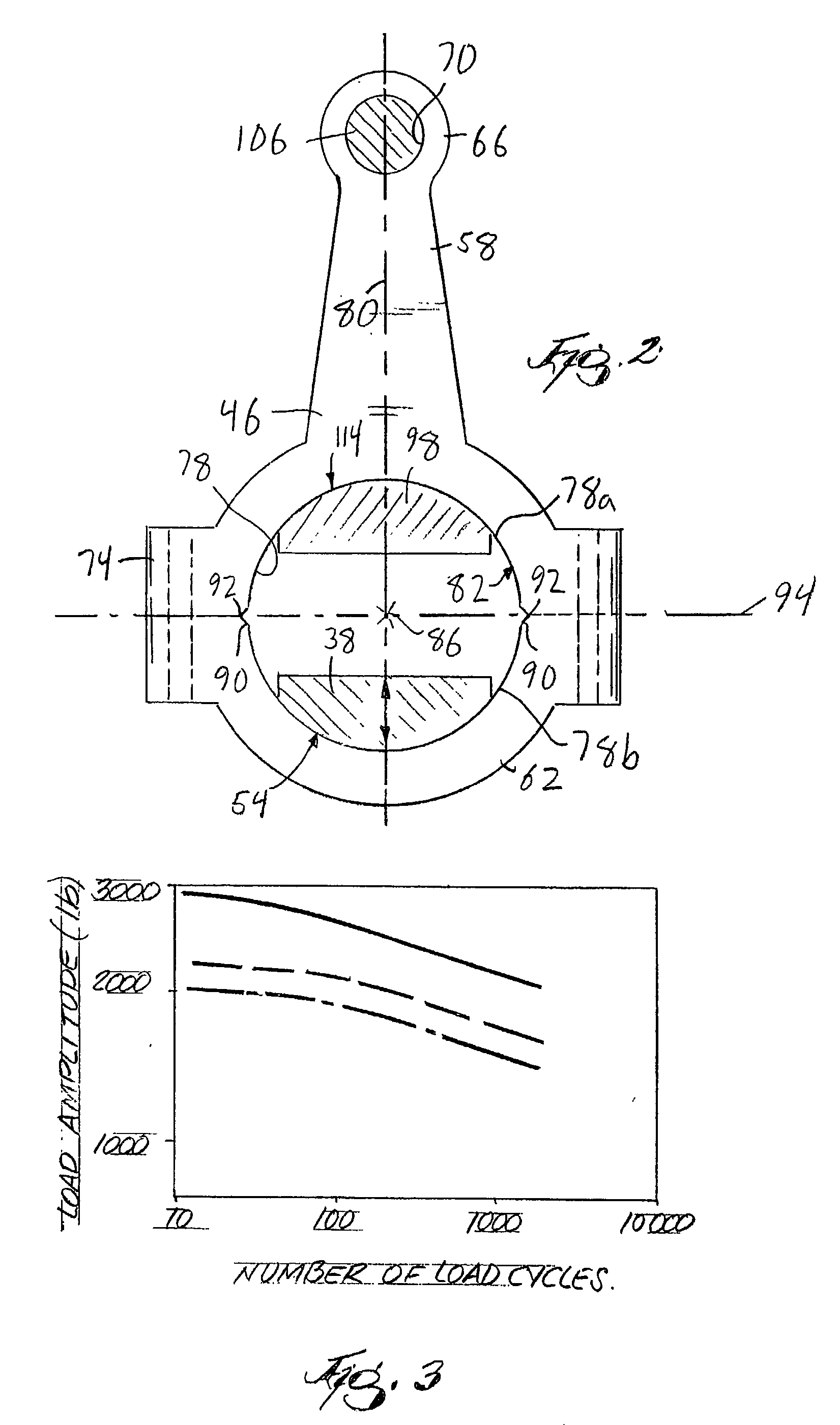Dynamic splitting of connecting rods
a technology of connecting rods and dynamic splitting, which is applied in the direction of mechanical equipment, engine components, manufacturing tools, etc., can solve the problems of imposing a significant increase in manufacturing costs, eliminating the economic benefit of the near-network shape process, and rods and caps will no longer fit perfectly back together
- Summary
- Abstract
- Description
- Claims
- Application Information
AI Technical Summary
Problems solved by technology
Method used
Image
Examples
Embodiment Construction
[0021] Before describing the invention in detail, it will be helpful to introduce certain metallurgical concepts and equations to facilitate a more complete understanding of the invention.
[0022] The present invention deals with dynamically loading and fatigue fracturing substantially any structural part that is fractured into two or more separate pieces, and is then reassembled into a single assembly having substantially the same shape and dimensions as the original, non-fractured part. One of the most useful applications for the fatigue fracturing method of the present invention relates to connecting rods for piston cylinder devices, such as those discussed above in the Background.
[0023] As discussed above, fracture mechanics principles suggest that substantially any solid material will break in a brittle fashion when a material crack having a certain length is subjected to a certain tensile stress. The crack length and tensile stress required for brittle fracture of a given part a...
PUM
| Property | Measurement | Unit |
|---|---|---|
| frequency | aaaaa | aaaaa |
| oscillation frequency | aaaaa | aaaaa |
| fracture plane | aaaaa | aaaaa |
Abstract
Description
Claims
Application Information
 Login to View More
Login to View More - R&D
- Intellectual Property
- Life Sciences
- Materials
- Tech Scout
- Unparalleled Data Quality
- Higher Quality Content
- 60% Fewer Hallucinations
Browse by: Latest US Patents, China's latest patents, Technical Efficacy Thesaurus, Application Domain, Technology Topic, Popular Technical Reports.
© 2025 PatSnap. All rights reserved.Legal|Privacy policy|Modern Slavery Act Transparency Statement|Sitemap|About US| Contact US: help@patsnap.com



